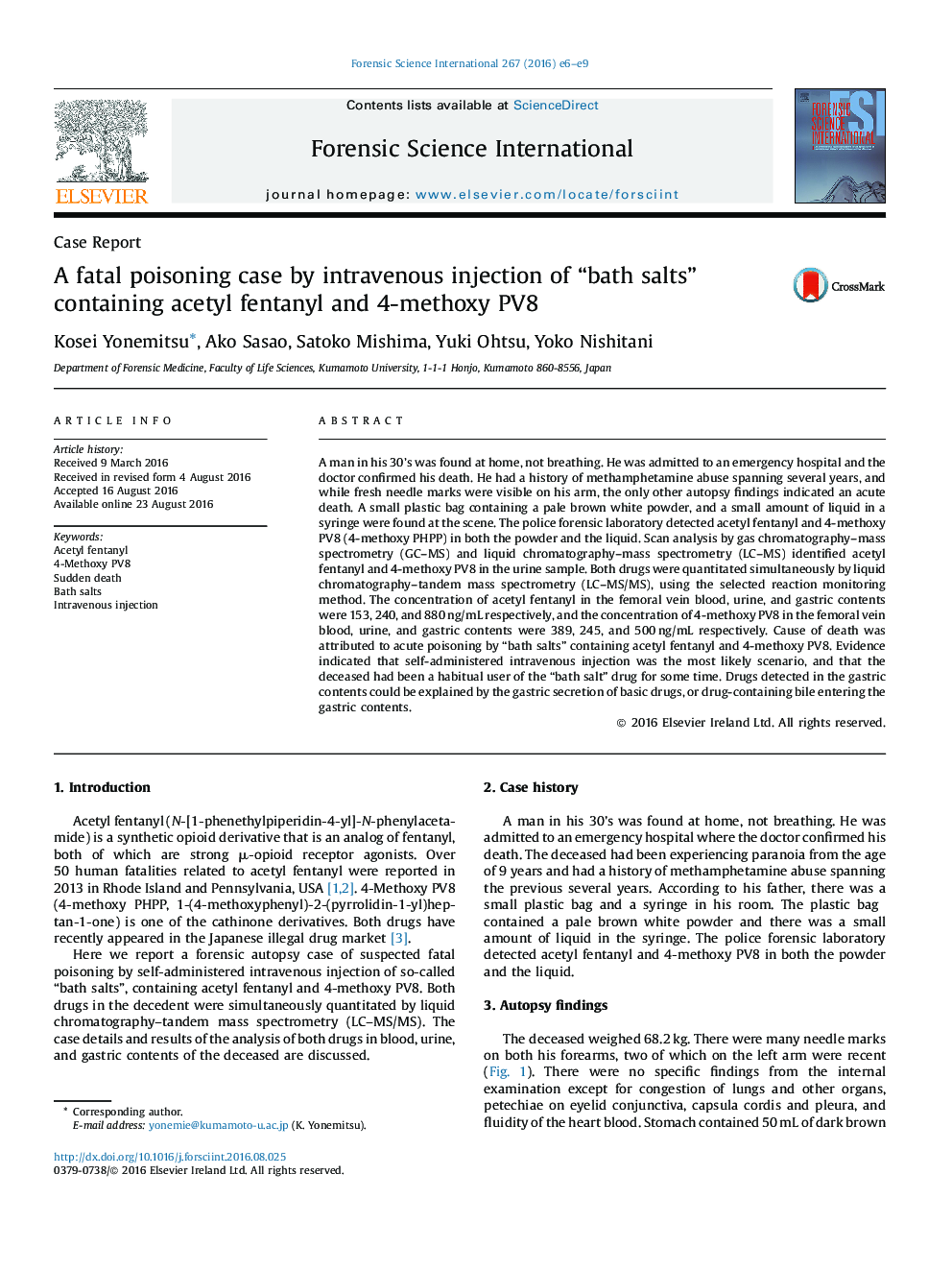| Article ID | Journal | Published Year | Pages | File Type |
|---|---|---|---|---|
| 6462656 | Forensic Science International | 2016 | 4 Pages |
â¢A fatal “bath salts” poisoning case, involving acetyl fentanyl and 4-methoxy PV-8.â¢Simultaneous quantitative analysis of both drugs was done using LC-MS/MS.â¢Administration of the drugs was most likely to be intravenous.
A man in his 30's was found at home, not breathing. He was admitted to an emergency hospital and the doctor confirmed his death. He had a history of methamphetamine abuse spanning several years, and while fresh needle marks were visible on his arm, the only other autopsy findings indicated an acute death. A small plastic bag containing a pale brown white powder, and a small amount of liquid in a syringe were found at the scene. The police forensic laboratory detected acetyl fentanyl and 4-methoxy PV8 (4-methoxy PHPP) in both the powder and the liquid. Scan analysis by gas chromatography-mass spectrometry (GC-MS) and liquid chromatography-mass spectrometry (LC-MS) identified acetyl fentanyl and 4-methoxy PV8 in the urine sample. Both drugs were quantitated simultaneously by liquid chromatography-tandem mass spectrometry (LC-MS/MS), using the selected reaction monitoring method. The concentration of acetyl fentanyl in the femoral vein blood, urine, and gastric contents were 153, 240, and 880Â ng/mL respectively, and the concentration of 4-methoxy PV8 in the femoral vein blood, urine, and gastric contents were 389, 245, and 500Â ng/mL respectively. Cause of death was attributed to acute poisoning by “bath salts” containing acetyl fentanyl and 4-methoxy PV8. Evidence indicated that self-administered intravenous injection was the most likely scenario, and that the deceased had been a habitual user of the “bath salt” drug for some time. Drugs detected in the gastric contents could be explained by the gastric secretion of basic drugs, or drug-containing bile entering the gastric contents.
